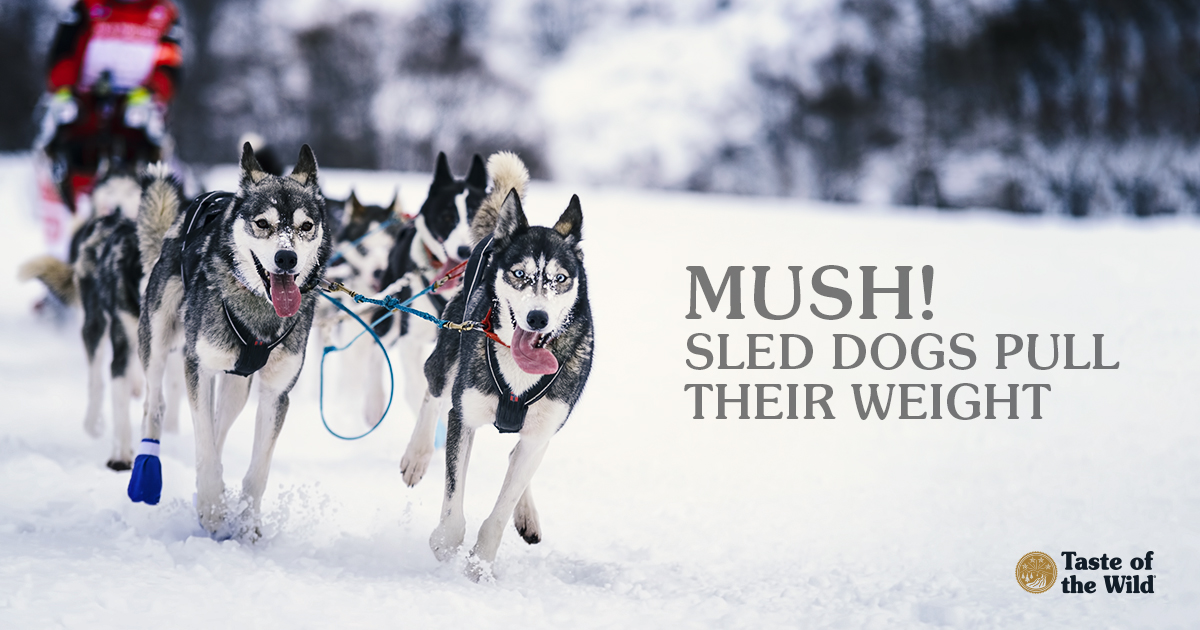 For sled dogs, few things spark more yips and leaps of enthusiasm than the sight of their sleds. The sight of those harnesses and runners means they’re about to go bounding through the drifts, setting snow swirling with their churning paws.
For sled dogs, few things spark more yips and leaps of enthusiasm than the sight of their sleds. The sight of those harnesses and runners means they’re about to go bounding through the drifts, setting snow swirling with their churning paws.
While sled dogs today mostly compete in races like the Iditarod or provide tourists with frosty adventures, some dog sled teams are still hard at work in the great white wilderness.
A Short History of Dog Sledding
The first evidence of sled dogs was discovered at a 2,000-year-old archeological site in the Siberian Arctic, according to National Geographic magazine. Here, scientists not only discovered sleds but also depictions of dogs wearing harnesses. This finding hints at the possibility that dogs could have transported people and cargo way back when, greatly accelerating the human migration.
During the Alaskan gold rush at the end of the nineteenth century, teams of sled dogs were used to transport ambitious prospectors and eventually their mail and other supplies. Dogs also helped explorers reach the South Pole and navigate the Northwest Passage.
In 1925, a team of sled dogs made a famous trek to Nome, Alaska, to deliver life-saving antitoxin for an outbreak of diphtheria. Eventually, though, snowmobiles and airplanes replaced many dog sled teams.
Protecting the Wilderness in Denali State Park
Some sled dogs are still at work in places like this national park in Alaska, where motorized vehicles are not allowed to trek. Each year, the park breeds its own dogs and trains puppies for a life exploring the 2 million acres of wilderness.
Training begins for young pups soon after they’re born. Rangers look for confident pups that get along with other dogs and have a real desire to run and work cooperatively with mushers. As the pups mature, rangers teach them how pull through skijoring activities.
When in top condition, these dogs may haul wildlife researchers and supplies for 30 or more miles a day, scouting for illegal poaching activity on route. Dogs generally work until retirement at about 9 years of age.
The World’s Most Famous Sled Dog Race
Today, the Iditarod Trail Sled Dog Race commemorates the route where sled dogs carried mail and supplies to gold prospectors in Alaska. Starting in Anchorage, the race covers about 1,000 miles before the teams arrive in Nome. Depending on the conditions, the length and course can vary each year. Each team must start with one musher, or driver, and 16 dogs. Only northern breeds such as Alaskan or Siberian huskies are allowed to participate. Alaskan huskies, which are not recognized by the American Kennel Club (AKC) as a distinct breed, are generally preferred by mushers. Largely a cross between Alaskan malamutes and Siberian huskies, these dogs are bred for speed, endurance and enthusiasm.
Drivers must stop at checkpoints along the way, where dogs are often examined to make sure they’re not experiencing any pain or injuries. At least five dogs must be harnessed and pulling when the team crosses the finish line. The winning team takes home about $75,000 in prize money, but even the 30th-place team receives a small cash prize.
Whether racing hard or hard at work, sled dogs get to frolic in the beauty of untouched wilderness. It’s not a bad life, after all.
RELATED POST: Herding Dogs: From Home on the Range to Home
The information in this blog has been developed with our veterinarian and is designed to help educate pet parents. If you have questions or concerns about your pet's health or nutrition, please talk with your veterinarian.
